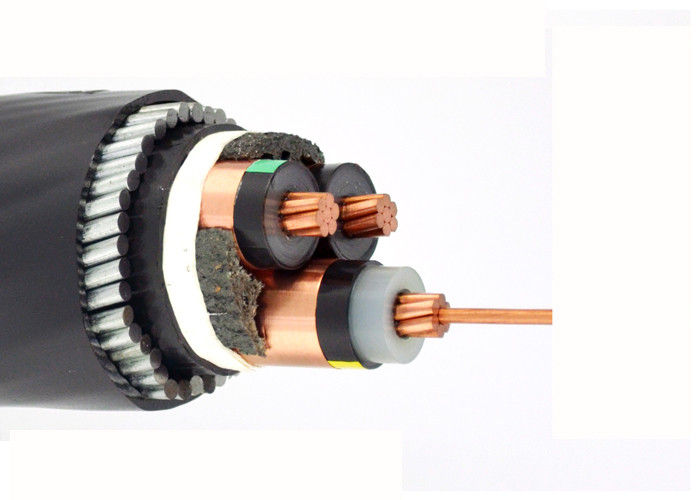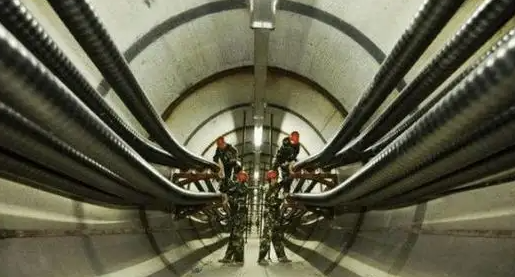Underground cable is the cable designed to be place underground, either directly buried or in conduit. Underground cable must be specially designed to protect against moisture, rodents, cable-seeking backhoes, and other earth-moving equipment.

The Underground cable are classified in two ways:by the voltage capacity, or by the construction.
LT cables: Low-tension cables with a maximum capacity of 1000 V
HT Cables: High-tension cables with a maximum of 11KV
ST cables: Super-tension cables with a rating of between 22 KV and 33 KV
EHT cables: Extra high-tension cables with a rating of between 33 KV and 66 KV
Extra super voltage cables: with maximum voltage ratings beyond 132 KV
Belted cables: Maximum voltage of 11KVA
Screened cables: Maximum voltage of 66 KVA
Pressure cables: Maximum voltage of more than 66KVA
Less subject to damage from severe weather conditions (mainly lightning, wind and freezing)
Reduced range of electromagnetic fields (EMF) emission, into the surrounding area. However depending on the depth of the underground cable, greater emf may be experienced.

The electric current in the cable conductor produces a magnetic field, but the closer grouping of underground power cables reduces the resultant external magnetic field and further magnetic shielding may be provided.
Underground cables need a narrower surrounding strip of about 1–10 meters to install (up to 30 m for 400 kV cables during construction), whereas an overhead line requires a surrounding strip of about 20–200 meters wide to be kept permanently clear for safety, maintenance and repair.
Underground cables pose no hazard to low flying aircraft or to wildlife.
Much less subject to conductor theft, illegal connections, sabotage, and damage from armed conflict.
Burying utility lines makes room for more large trees on sidewalks, which convey environmental benefits and increase property values.
While the underground cable is also having such disadvantages as more expensive, difficult in identifying, repairing broken cables and damage to cables or electrocution may occur to people digging the ground and if they are unaware of the cable’s existence.
To avoid artificial damage, people usually install the underground cable marker. Markers are put at regular intervals to show the route and warn of the hazard of digging into the cable.
On the whole, Underground cable is the replacement of overhead cable In the place of densely populated or land is costly or environmentally or aesthetically sensitive, The advantages can in some cases outweigh the disadvantages of the higher investment cost, and more expensive maintenance and management.
Now more and more developed countries are choosing the underground cable.
All low and medium voltage electrical power (<50 kV) in the Netherlands is now supplied underground. Other EU countries such as the UK and Germany are undergrounding a portion of their cables each year.
In the United States, the California Public Utilities Commission (CPUC) Rule 20 permits the undergrounding of electrical power cables under certain situations.